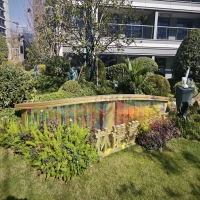Welcome to the website for landscape facilities products and knowledge.
How do landscape tables incorporate planters or greenery to enhance biophilic design?
Biophilic design, which seeks to strengthen the connection between humans and nature, has become a cornerstone of modern outdoor and indoor spaces. Landscape tables, a versatile furniture solution, play a pivotal role in this movement by seamlessly integrating planters or greenery. These tables are designed not just for functionality but to bring nature closer to everyday life.
One key method is embedding planters directly into the table structure. Whether as centerpieces, side compartments, or even cascading vertical gardens, these built-in planters allow lush foliage to thrive while maintaining a sleek aesthetic. Materials like weather-resistant wood, stone, or recycled composites ensure durability while complementing natural elements.
Another approach involves modular designs where greenery can be added or rearranged. For instance, tables with removable trays or slots for potted plants enable customization, adapting to seasonal changes or personal preferences. This flexibility enhances the biophilic experience, offering dynamic interactions with nature.
Beyond aesthetics, landscape tables with greenery improve air quality and reduce stress, aligning with biophilic principles. Strategic placement in communal areas—such as patios, offices, or urban plazas—fosters social engagement while grounding spaces in nature.
By blending form and ecology, landscape tables exemplify how biophilic design can transform ordinary furniture into living, breathing art. Their innovative use of planters and greenery bridges the gap between built environments and the natural world, enriching both visually and emotionally.
Related search:

Recommendation
Metal and acrylic color-changing combined curtain wall for large-scale public landscape facilities